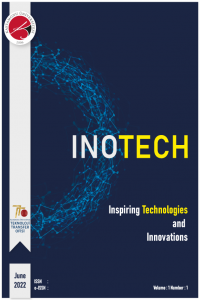Provenance of Kinet Höyük Ceramics Uncovered in Excavations: Petrography, XRF and Raman Analysis
Provenance of Kinet Höyük Ceramics Uncovered in Excavations: Petrography, XRF and Raman Analysis
The cultural assets unearthed at Kinet Höyük are a sensitive indicator of the forces that shaped the economic relationship in the Eastern Mediterranean during these centuries. Among the cultural assets, especially pottery, is important evidence for the determination of cultural and economic relations at important chronological moments. Petrographic, XRF (X-rays fluorescence) and Raman analysis techniques were used to determine the mineralogical-petrographic and chemical contents of the pottery selected from the layers dating to the Bronze Age, Early Iron Age and Hellenistic Period unearthed during the excavations at Kinet Höyük and clay samples taken from the environment. It was determined that some of the studied samples were compatible with the samples taken from the regional geological formations and clay beds, and it was determined that they were local production.
Keywords:
Kinet Höyük, Ceramics Provenance, Petrographic, XRF, Raman,
___
- Deniz K. Buzlukdağı (Kırşehir) alkali magmatik kayaçların jeolojisi, petrolojisi ve konfokal raman spektrometresi ile incelenmesi, yayınlanmış yüksek lisans tezi, Ankara üniversitesi fen bilimleri enstitüsü, Ankara. (2010).
- Deniz K, Kadioglu, Y.K. “Geochemistry of salts and the effect of trace elements on human health: Turkey salt resources”, International Journal of Environmental Analytical Chemistry, doi:10.1080/03067319.2021.1934830 (2021).
- Doyuran, V. “Erzin ve Dörtyol ovalarının jeolojik ve hidrojeolojik özellikleri” Türkiye Jeoloji Kurumu Bülteni, C. 25, 151 - 160, Ağustos, (1982).
- Gates, M.H. "Kinet Höyük (Hatay, Turkey) and MB Levantine chronology." Akkadica, 119-120, 77-101, (2000).
- Gates, M.H. “Dating the hittite levels at kinet höyük: a revised chronology”, In Structuring and Dating in Hittite Archaeology, edited by Dirk Paul Mielke, Ulf-Dietrich Schoop, and Jürgen Seeher, 293-309. BYZAS 4. Istanbul: Deutsches Archäologisches Institut, (2006).
- Gutsuz P, Kibaroğlu, M G, Sunal, G, Hacıosmanoğlu, S. “Geochemical characterization of clay deposits in the Amuq valley (southern Turkey) and the implications for archaeometric study of ancient ceramics”, Applied Clay Science,141, 316–333, (2017).
- Kadıoglu Y.K, Deniz K. ve Koralay T. “Nature of quaternary basalts from amanus mountain: southern part of Turkey”, 18th International Multidisciplinary Scientific GeoConference Sgem2018, 331-338, (2018).
- Kibaroğlu M. “Petrographische und geochemische untersuchungen an archäologischer keramik aus Nordost-Syrien, SüdostAnatolien”, Ost-Anatolien und Ost-Georgien vorgelegt von Mustafa Kibaroğlu aus Ardeşen/Türkei, (2008).
- Kibaroğlu M. Archaeometric_investigations_of_kura-araxes ware, International Symposium on East Anatolia—South Caucasus Cultures: Proceedings I, Edited by Mehmet Işıklı and Birol Can, Cambridge Scholars Publishing, (2015).
- Lustrino M, Sharkov E. “Neogene volcanic activity of western Syria and its relationship with arabian plate kinematics” Journal of Geodynamics 42,115–139, (2006).
- Sarıfakılıoğlu, E, Sevin M, Dilek T. Türkiye ofiyolitleri. MTA, Özel Yayın Serisi:35, Ankara, (2017).
- Türkecan, A.Türkiye’nin senozoyik volkanitleri. MTA Yayınları, Özel Yayın Serisi-33. (2015).
- Yayın Aralığı: Yılda 2 Sayı
- Başlangıç: 2021
- Yayıncı: Kastamonu Üniversitesi
Sayıdaki Diğer Makaleler
Recent Developments with Biosensors in the Diagnosis of Cancer Diseases
Goksal GUNERHAN, Emin ÇAĞIL, Denizhan DİVANLIOĞLU, Özhan Merzuk UÇKUN, Murat KORKMAZ, Ali DALGIÇ, Ahmet Deniz BELEN
Daily Digital Currency Values Estimation Using Artificial Intelligence Techniques
Ahmet TABANLIOĞLU, Abdülkadir GÜMÜŞÇÜ
Evaluation the Knowledge and Radiation Protection of Radiation Workers at Ibensina Hospital
Yosef G. Ali MADEE, Rezvan REZAEİZADEH, Aybaba HANÇERLİOĞULLARI
Provenance of Kinet Höyük Ceramics Uncovered in Excavations: Petrography, XRF and Raman Analysis
Murat EROĞLU, Kıymet DENİZ, Yusuf Kağan KADIOĞLU, Marie-henriette GATES
